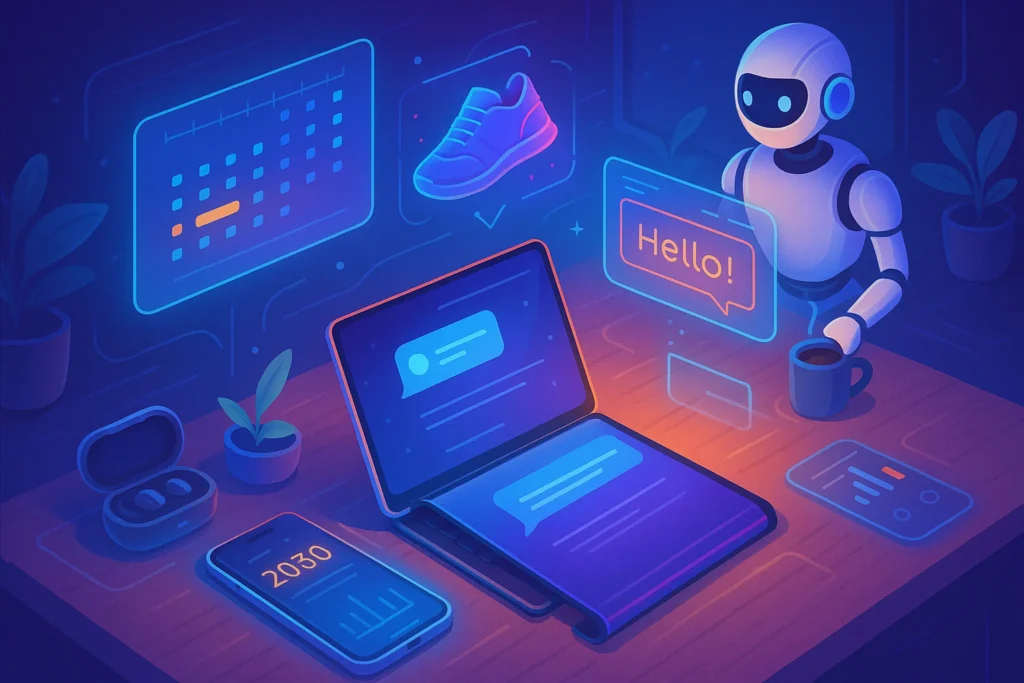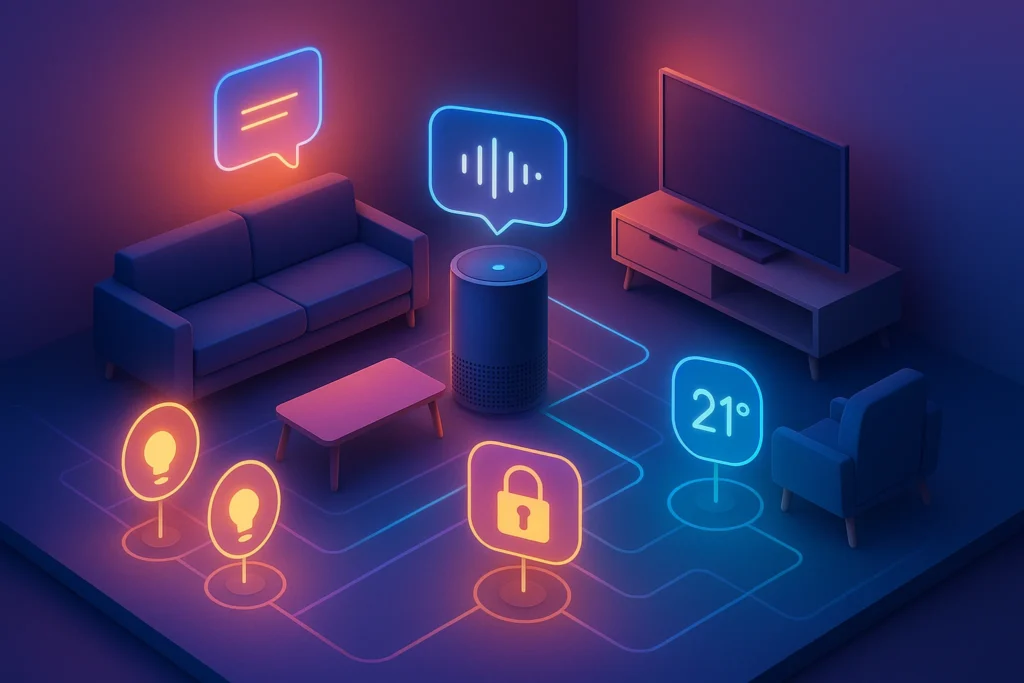Introduction: Why We’re Fascinated by Futuristic Gadgets
There’s something magnetic about futuristic gadgets — they sit at the intersection of imagination and engineering, offering a tantalizing glimpse of what life could be in just a few years. These are the ideas that spark conversations at events like CES and SXSW, the prototypes that flood YouTube tech channels with speculation videos, and the designs that make you think, “I wish I had that right now.”
Futuristic gadgets don’t just inspire; they influence the entire tech ecosystem. Even if a brain-computer interface or rollable phone isn’t something you can order on Amazon today, the research and experimentation happening now will shape the products you use tomorrow. Just as Foldable Phones evolved from sci-fi concept to daily driver for some users, today’s most ambitious prototypes could be the standard tech of 2030.
In this deep dive, we’ll explore concept gadgets and prototypes that hint at our consumer tech future — from rollable displays to advanced home robots, brain-computer interfaces, and next-gen wearables. We’ll also look at how these ideas could transform work, education, health, and entertainment, and what challenges might keep them from mainstream adoption.
💡 Nerd Tip: Think of this guide as a time machine — we’re not guessing wildly, we’re tracking where the seeds of the future are already planted.
Top Concept Gadgets to Watch by 2030
Rollable Display Phones
Foldables were step one. Rollable displays could be step two. Imagine a phone that slips into your pocket like any other, but with a gentle pull, the screen expands into a small tablet — no hinges, no hard crease. Oppo and LG have shown off rollable display prototypes, but durability and cost remain hurdles.
The benefits are easy to picture. For entertainment, you could watch movies or multitask on a much larger screen without carrying a separate device. For productivity, a rollable device could display a spreadsheet alongside a video call — ideal for mobile professionals and creators.
As discussed in our post on Foldable Phones, early adopters are willing to pay a premium for new form factors. If manufacturing challenges like flexible OLED wear and mechanical reliability are solved, rollables could be a mainstream reality by late this decade.
Advanced Home Robots
Home robots today — vacuum cleaners, lawn mowers, basic telepresence devices — are specialists. By 2030, the vision is a multi-skilled home companion, powered by AI, capable of complex tasks like unloading the dishwasher, folding laundry, preparing ingredients, and providing elderly care.
Boston Dynamics’ Spot and Samsung’s Bot Handy are already showing glimpses of what’s possible. The next step is integrating these robots with smart home ecosystems, so your AI doesn’t just control appliances — it physically manipulates them.
We’ve seen how Eco-Friendly Gadgets can evolve from niche to normal when they save time and resources. The same principle applies to robotics: once they cross a threshold of affordability and trustworthiness, adoption will accelerate fast.
Brain-Computer Interfaces (BCIs)
BCIs might be the most transformative — and controversial — tech of the next decade. Neuralink, Kernel, and other companies are developing devices to let humans control computers directly with their minds.
Consumer BCIs could enable typing, navigation, or creative work without touching a device. For accessibility, the implications are enormous — restoring mobility, enabling speech for those with impairments, or controlling assistive devices.
But BCIs also bring ethical, privacy, and security concerns. As we noted in our Augmented Reality coverage, immersive tech works best when user control and consent are built in from the start. BCIs will demand even higher standards.
Next-Gen Wearable Tech
Smartwatches and fitness trackers are already mainstream, but by 2030, wearables may become invisible yet indispensable. Think ultra-thin health monitoring patches, AI-driven posture correction bands, or Smart Glasses that project AR overlays for navigation, work, or play.
Future wearables will be proactive, not just reactive. They’ll predict fatigue, detect hydration loss, and suggest micro-breaks. Combined with BCIs, they might even adapt interfaces to your mood or cognitive state in real time.
These shifts echo the same trajectory we’ve seen with Portable Monitors and Other Underrated Productivity Gadgets — tech that starts niche but quickly becomes essential when it seamlessly improves daily life.
How These Innovations Could Change Daily Life
Work will be increasingly location-agnostic. Rollable displays and smart wearables will allow complex multitasking from anywhere, while home robots handle repetitive chores.
Education will move from passive learning to active, immersive experiences. Imagine BCI-assisted study sessions or AR field trips through ancient cities.
Health will become continuous and preventative. Wearables could detect early signs of illness or stress, while BCIs might help in neurological therapy. Robots could assist in elder care, supporting independence at home.
Entertainment will blend physical and digital. Holographic concerts, AR-enhanced sports, and interactive media will become everyday options.
Barriers to Mainstream Adoption
High costs, technical limitations, and cultural readiness are the main roadblocks. A rollable display phone will remain a luxury until flexible components are mass-produced at low cost. Home robots need to prove reliability and safety. BCIs must overcome regulatory and ethical hurdles.
As with Eco-Friendly Gadgets, even superior products can stall if they don’t fit user habits or budgets. Affordability, trust, and ecosystem support will dictate which concepts thrive.
From Concept to Reality
History is full of once-impossible ideas becoming common tools. Foldable displays were tech curiosities; now they’re on store shelves. The same pattern is likely for these emerging gadgets.
Smart Glasses may first dominate enterprise use — logistics, repair, remote training — before fashion and affordability bring them to consumers. BCIs might begin in medical rehabilitation before expanding to general-purpose use.
Our AI & Future Tech Predictions for the Next Decade explain how these tipping points often happen when hardware, software, and cultural factors align.
🎨 Concept vs Real-World Readiness (by 2030)
| Gadget Concept | Current Stage | Readiness by 2030 | Key Barrier to Solve |
|---|---|---|---|
| Rollable Display Phones | Prototype demos | High | Durability, cost |
| Advanced Home Robots | Limited function | Medium-High | Safety, affordability |
| Brain-Computer Interfaces | Early trials | Medium | Privacy, regulation |
| Next-Gen Wearables | Early adoption | Very High | Comfort, battery |
💬 Expert Quote:
“The leap from concept to consumer isn’t just about hardware — it’s about ecosystem readiness. A gadget becomes essential when it integrates naturally into how people already live and work.” – Dr. Lena Alvarez, Futurist
🚀 Want to Stay Ahead of Tomorrow’s Gadgets?
Join our free Future Tech Watchlist and get monthly updates on emerging gadgets, prototypes, and game-changing innovations—straight to your inbox.
No hype. Just the breakthroughs that matter.
🔐 100% privacy. No spam. Just value-packed future tech insights from NerdChips.
Mini Case Study: Prototype to Market
A Japanese robotics startup recently unveiled a multifunctional kitchen assistant robot. Using AI vision and advanced manipulators, it can identify ingredients, suggest recipes based on user dietary preferences, and cook simple meals. Initially developed for elder care facilities, the prototype’s success has attracted investment from major appliance brands — a strong sign this tech could hit the consumer market well before 2030.
Signals to Watch for Market Readiness
Futuristic gadgets don’t become mainstream overnight. Look for key indicators that a concept is nearing real-world launch:
-
Component cost drops — e.g., flexible OLED prices falling sharply.
-
Major brand involvement — when companies like Apple or Samsung enter a niche.
-
Regulatory green lights — government approval for new medical or privacy-sensitive tech.
Spotting these signals early can give both consumers and investors a head start.
Positive vs. Negative Scenarios for 2030
Optimistic path: Rapid tech improvements, falling prices, and strong consumer demand lead to widespread adoption. Rollable phones become common, advanced home robots assist millions, and BCIs gain mainstream health applications.
Cautionary path: Technical barriers persist, public skepticism slows uptake, and strict regulations limit BCIs and always-on wearables. In this case, most futuristic gadgets stay niche until well beyond 2030.
Predicted Timeline for Key Gadgets
| Gadget Concept | First Consumer Release (Est.) | Widespread Adoption (Est.) |
|---|---|---|
| Rollable Display Phones | 2026–2027 | 2029–2030 |
| Advanced Home Robots | 2028 | 2033+ |
| Brain-Computer Interfaces | 2029–2030 (medical use) | 2035+ |
| Next-Gen Wearables | 2025 | 2027–2028 |
Impact Beyond Consumers
The ripple effects of these innovations will extend far beyond personal convenience.
-
Industry: Automation in logistics, manufacturing, and healthcare.
-
Environment: Potential for energy-efficient designs and reduced waste through modular hardware.
-
Policy: New laws for AI safety, data privacy, and human-technology integration.
These broader impacts will shape how society adapts to — and governs — the technology landscape of 2030.
🧠 Nerd Verdict
The gadgets of 2030 won’t just be tools — they’ll be extensions of our capabilities. The real question is whether we’ll adapt to them as fast as they adapt to us.
❓ FAQ: Nerds Ask, We Answer
💬 Would You Bite?
Which of these future gadget concepts would you try on day one — and which would you keep at arm’s length?
Share your thoughts below.



